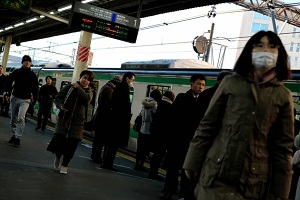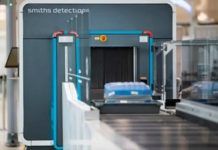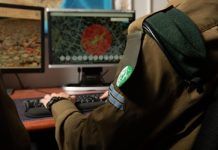East Japan Railway Co., or JR East, has said it will introduce a system that can send images directly and automatically to police from its video surveillance cameras at stations in the event of an emergency, as Tokyo strengthens anti-terrorism measures in advance of the 2020 Summer Games.
In the run-up to the games, JR East said it will also increase the number of security cameras at stations in the capital and surrounding areas and set up a special department that will be tasked with monitoring images from them around the clock. By July next year, when the Olympics open, a total of about 22,000 security cameras will be in place near ticket gates and on platforms at around 1,200 stations as part of efforts to ensure public safety, the company said. Concerns about attacks on public transportation infrastructure have grown due to incidents aboard bullet trains in recent years.
In 2015, a man’s self-immolation onboard a shinkansen resulted in the death of the man as well as another passenger, and injured 26. Last year a man with a knife killed one passenger and hurt two others. JR East has decided to newly equip 8,300 local train cars operating in the greater Tokyo area and 200 shinkansen carriages with security cameras.
It also plans to install security cameras in all train cars manufactured from this point forward. Luggage inspections for train passengers are common in some countries but are not conducted in Japan.
There has been strong opposition among railway companies due to the inconvenience to passengers and the difficulty of finding space for such checks in stations. Recently the transport ministry began an experiment at Kasumigaseki Station, operated by Tokyo Metro Co. in a district of the capital where government offices are located, using a body scanner at two of the ticket gates to monitor objects under clothing. The experiment, which is running for seven hours per day, including peak hours, through Thursday, is aimed at helping the ministry identify potential problems as it considers the feasibility of such a system. Around 150,000 passengers per day use Kasumigaseki Station, which was one of the targets of the nerve gas attack by the Aum Shinrikyo cult in 1995.








